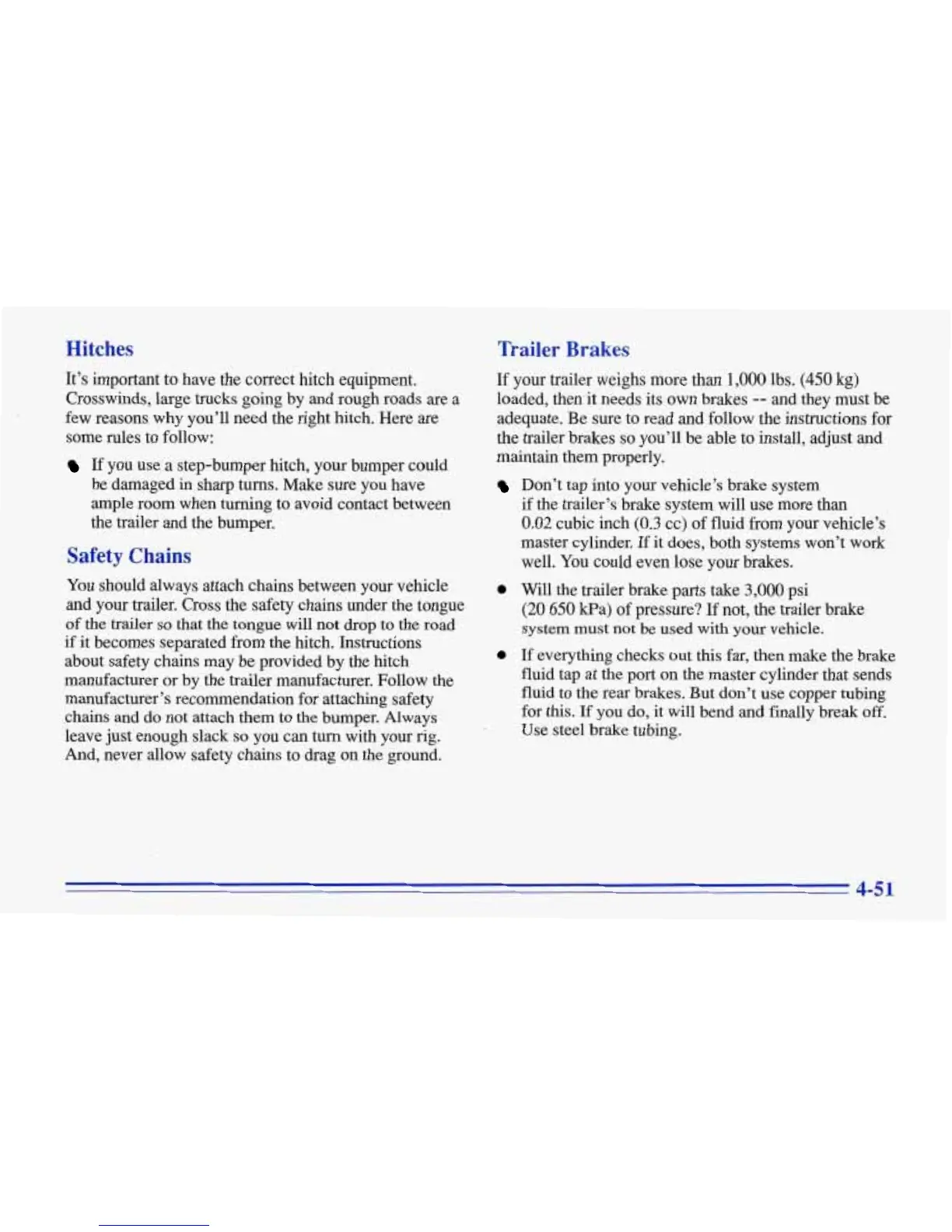Hitches
Trailer Brakes
It’s important to have the correct hitch equipment.
Crosswinds, large trucks going by and
rough
roads are a
few reasons why you’ll need the right hitch. Here are
some rules to follow:
If you use a step-bumper hitch, your bumper could
be damaged in sharp turns. Make sure you have
ample room when turning to avoid contact between
the trailer and the bumper.
Safety Chains
You should always attach chains between your vehicle
and your trailer. Cross the safety chains under the tongue
of
the
trailer
so
that
the
tongue
will not drop
to
the road
if it becomes separated from the hitch. Instructions
about safety chains may
be
provided by the hitch
manufacturer or by the trailer manufacturer. Follow the
manufacturer’s recommendation for attaching safety
chains and do not attach them to
the
bumper. Always
leave
just
enough slack
so
you can turn with your rig.
And, never allow safety chains to drag on the ground.
If your trailer weighs
more
than
1,000
lbs. (450
kg)
loaded, then it needs its own brakes
--
and
they must be
adequate. Be sure to read and follow the instructions for
the trailer brakes
so
you’ll be able
to
install, adjust
qd
maintain them properly.
Don’t tap into your vehicle’s brake system
if the trailer’s brake system. will use more than
0.02
cubic inch (0.3 cc)
of
fluid from your vehicle’s
master cylinder.
If
it
does, both systems won’t work
well. You could even lose your brakes.
0
Will the trailer brake parts take
3,000
psi
(20
650
Ea) of pressure?
If
not, the trailer brake
system
must
not
be
used with your vehicle.
0
If
everything checks out this far, then make the brake
fluid tap at the port
on
the master cylinder that sends
fluid to
the
rear brakes. But don’t use
copper
tubing
for this.
If
you do,
it
will bend and finally break
off.
Use steel brake tubing.
4-51
